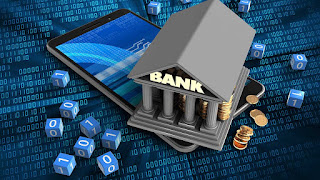Mobile payments share in P2M increased to 52 %, says HDFC Securities
Mobile payments continue to gain incremental market share at a faster pace, constituting around 52% of retail digital P2M (People-to-Merchant) payments during 11MFY22.
HDFC Securities report stated in 2019 it was 24 % and increased to 50% in CY21 of retail digital P2M payments. The number is expected to touch 56% by CY25, overtaking card spends. This is driving spends-based fee yields lower, although the overall P2M payments fee pool has been growing.
Credit card spends have rebounded strongly and are almost at pre-COVID levels, with resumption in physical mobility, ramp-up in card issuances, and increase in commercial card spends. While unit spends crossed pre-COVID levels, unit receivables, particularly revolving loans, are subdued, resulting in lower NII and profitability.
BNPL (Buy Now Pay Later) volumes have continued to record exponential growth in FY22, with enhanced adoption by customers and increasing use cases. BNPL volumes havecontinued to surge astronomically, with a few players beginning to clock meaningful scale in GMV. However, the waning market sentiment for listed FinTechs could drive consolidation, as IPO-ready companies chase economies of scale and profitability avenues.
The RBI seems to be readying a broad framework that encompasses BNPL credit. While this may appear to be negative for near-term growth, experts believe this adds to the industry’s stability and longevity.
While the industry remains in a high-growth phase, the path to profitability is still a long way off, thanks to limited revenue streams, high credit costs, and high marketing spends.
"Recent evidence of global peers (Klarna, AfterPay, and Affirm) reaffirms our belief that credit cards are indeed the most profitable way of completing the BNPL suite to drive revenues and profitability," says HDFC Securities.
While the overall payments pool continues to grow at a strong pace, the rising share of UPI is driving the overall payments fee yields lower. The increasing adoption of UPI could also be attributed to its reliability in usage. Despite an unprecedented surge in volumes, the technical decline levels for most leading banks have remained at sub-1%.
UPI has emerged as the preferred mode of merchant payments for low-value transactions, with nearly 3/4th of the transaction volumes below Rs 500. Credit card spends, on the other hand, have witnessed a steady increase in ticket sizes, possibly led by rising corporate card transactions a well as a shift in low-ticket size transactions towards UPI.
UPI is the most convenient form of P2P payments apart from wallets for small and large ticket sizes, compared to IMPS, NEFT, etc., which is also driving the average ticket sizes higher for UPI P2P. However, for P2M payments, there are several modes of payments, apart from UPI. While UPI remains the most favoured for small ticket sizes, capturing a larger market share from cash, debit card and credit card transactions, large ticket-size transactions remain skewed towards credit cards due to rewards, cashbacks, trust factor in larger transactions, commercial cards, etc.
Credit card spends continue to grow at a healthy clip, driven by gradual ramp-up in acquisitions, although portfolio re-leveraging has been slower, says HDFC Securities Research.
It may be noted, in a a bid to promote digital payments, the government had earmarked RS 13bn to reimburse the payments ecosystem players for the zero MDR for UPI and RuPay cards-based payments.
While the allocated quantum may not adequately compensate the payments processing ecosystem, it does suggest that transaction charges could be levied, either directly or indirectly, says the research firm.
ends


Comments